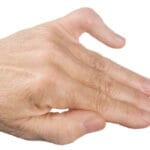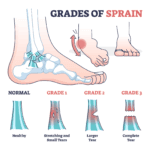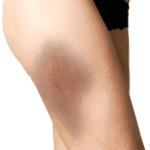Introduction
Postoperative care for arm injuries is crucial for ensuring optimal recovery and minimizing complications. Effective care can significantly impact pain management, mobility, and overall quality of life. This guide provides a comprehensive overview of postoperative care strategies, common complications, and best practices to support patients through their recovery journey.
Anatomy of the Arm
Understanding the arm’s anatomy is essential for grasping the intricacies of postoperative care. The arm comprises bones (humerus, radius, ulna), muscles, tendons, ligaments, blood vessels, and nerves (median, ulnar, and radial). Any surgical intervention can affect these structures, necessitating a tailored postoperative care plan.
Preoperative Considerations
Prehabilitation: Preoperative physical therapy or prehabilitation has been shown to improve postoperative outcomes. This involves strengthening exercises and conditioning to enhance the patient’s physical state before surgery.
Patient Education: Educating patients about the surgical procedure, expected outcomes, and postoperative care protocols can reduce anxiety and improve adherence to recovery plans.
Immediate Postoperative Care
Pain Management: Effective pain control is critical in the immediate postoperative period. Multimodal analgesia, including nonsteroidal anti-inflammatory drugs (NSAIDs), opioids, and local anesthetics, can be used to manage pain
Wound Care: Proper wound care is essential to prevent infections. This includes regular dressing changes, maintaining a sterile environment, and monitoring for signs of infection such as redness, swelling, or discharge.
Immobilization: Immobilizing the arm using slings, casts, or splints helps in stabilizing the surgical site and promoting healing. However, prolonged immobilization can lead to stiffness and reduced mobility, making it crucial to balance with early mobilization strategies.
Early Postoperative Phase
Physical Therapy: Initiating physical therapy early can prevent stiffness and promote functional recovery. Exercises may include passive range-of-motion exercises initially, progressing to active and resistance exercises as healing progresses.
Edema Management: Swelling is common after surgery. Elevating the arm, using compression garments, and applying cold packs can help reduce edema. Patients should be encouraged to perform gentle movements to enhance lymphatic drainage.
Nutrition: Proper nutrition supports the healing process. A diet rich in proteins, vitamins (especially Vitamin C and D), and minerals (such as calcium) is recommended. Hydration is equally important to facilitate recovery.
Rehabilitation and Long-term Care
Functional Exercises: As the patient progresses, functional exercises that mimic daily activities are introduced. These exercises help restore the arm’s strength and functionality, allowing the patient to return to normal activities.
Scar Management: Techniques such as massage, silicone gel sheets, and laser therapy can improve scar appearance and flexibility. Scar management is particularly important in preventing adhesions and contractures.
Monitoring for Complications: Regular follow-ups with the healthcare provider are necessary to monitor for complications such as infections, deep vein thrombosis, or nerve damage. Early detection and intervention can prevent long-term issues.
Complications and Their Management
Infections: Surgical site infections require prompt treatment with antibiotics and, in severe cases, surgical debridement. Signs of infection include increased pain, redness, heat, and pus at the incision site.
Nerve Damage: Postoperative nerve injuries can cause numbness, tingling, or weakness. Electromyography (EMG) and nerve conduction studies can assess nerve function. Physical therapy and, occasionally, surgical intervention are needed for recovery.
Stiffness and Contractures: Stiffness can be mitigated with early mobilization and physical therapy. In cases of severe contractures, interventions like manipulation under anesthesia or surgical release may be necessary.
Frequently Asked Questions
Q: How long will I need to wear a sling or cast?
A: The duration depends on the type and extent of surgery. Generally, immobilization lasts from a few days to several weeks. Your surgeon will provide specific guidelines.
Q: When can I start physical therapy?
A: Physical therapy often begins within a few days post-surgery with gentle movements. The intensity of therapy increases as healing progresses. Follow your healthcare provider’s advice for optimal results.
Q: What should I do if I experience severe pain or swelling?
A: Severe pain or swelling could indicate a complication. Contact your healthcare provider immediately for evaluation and appropriate management.
Q: Are there activities I should avoid during recovery?
A: Yes, avoid activities that strain the surgical site, such as heavy lifting or repetitive movements. Your physical therapist will guide you on safe exercises and activities.
Conclusion
Effective postoperative care is pivotal for the successful recovery of arm injuries. By adhering to prescribed care protocols, engaging in physical therapy, and maintaining open communication with healthcare providers, patients can achieve optimal outcomes and return to their daily activities.





